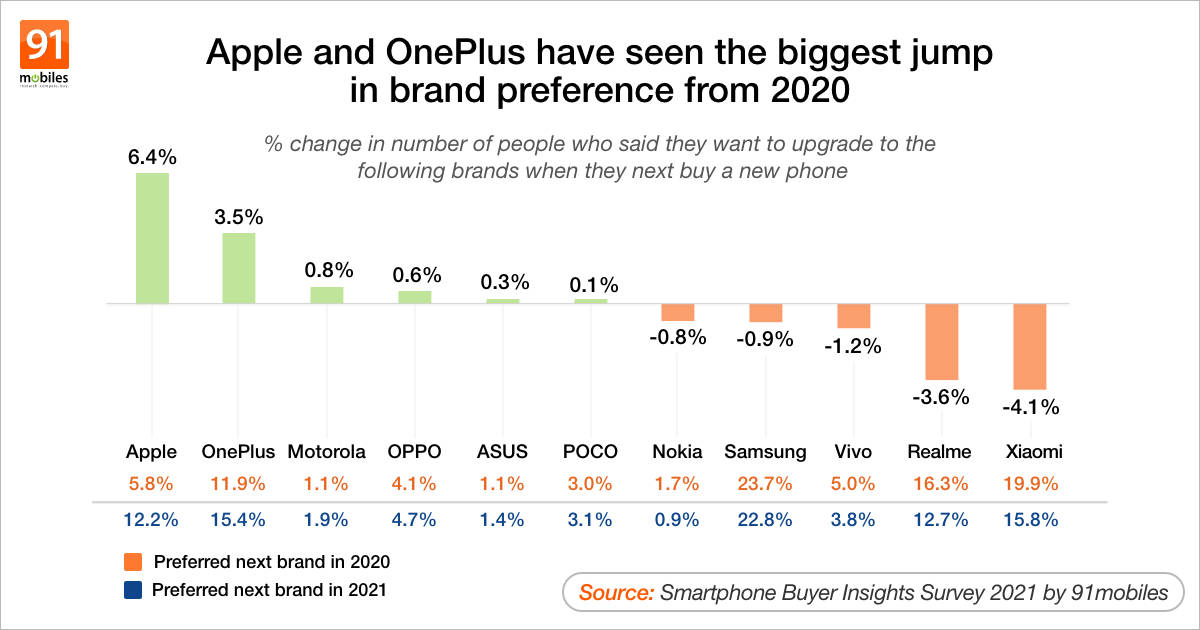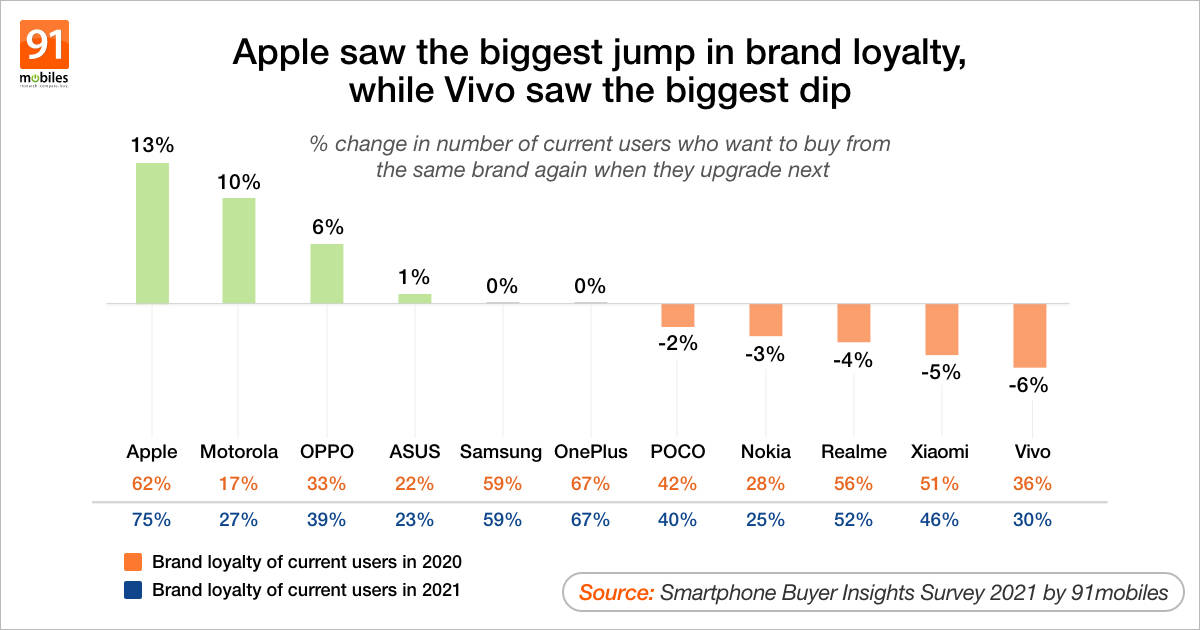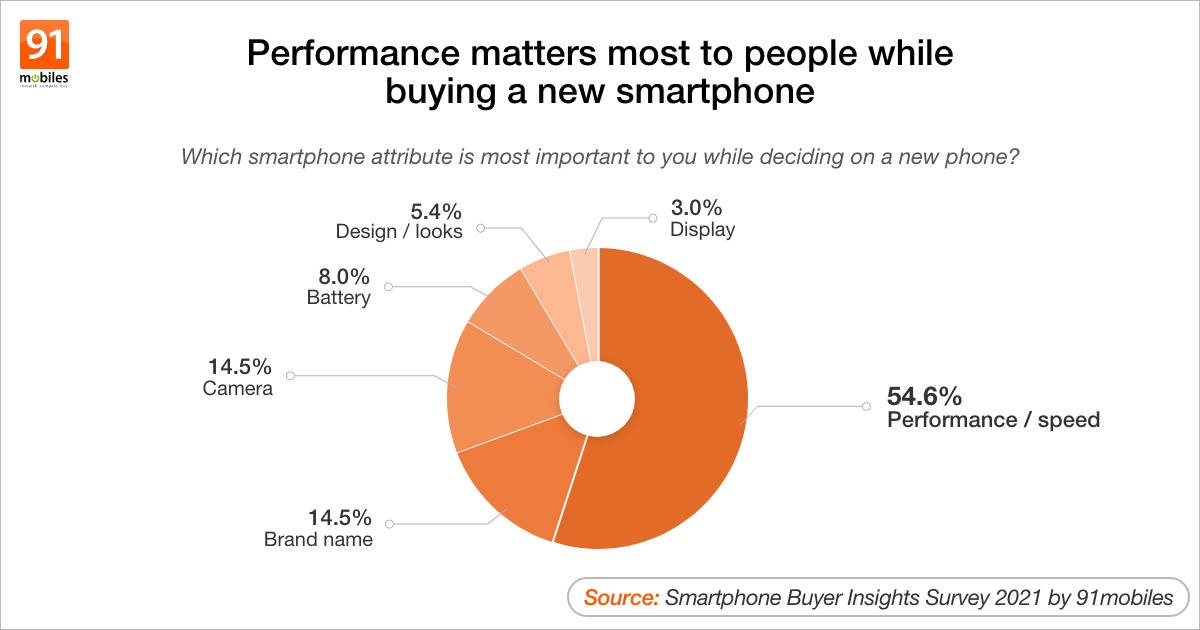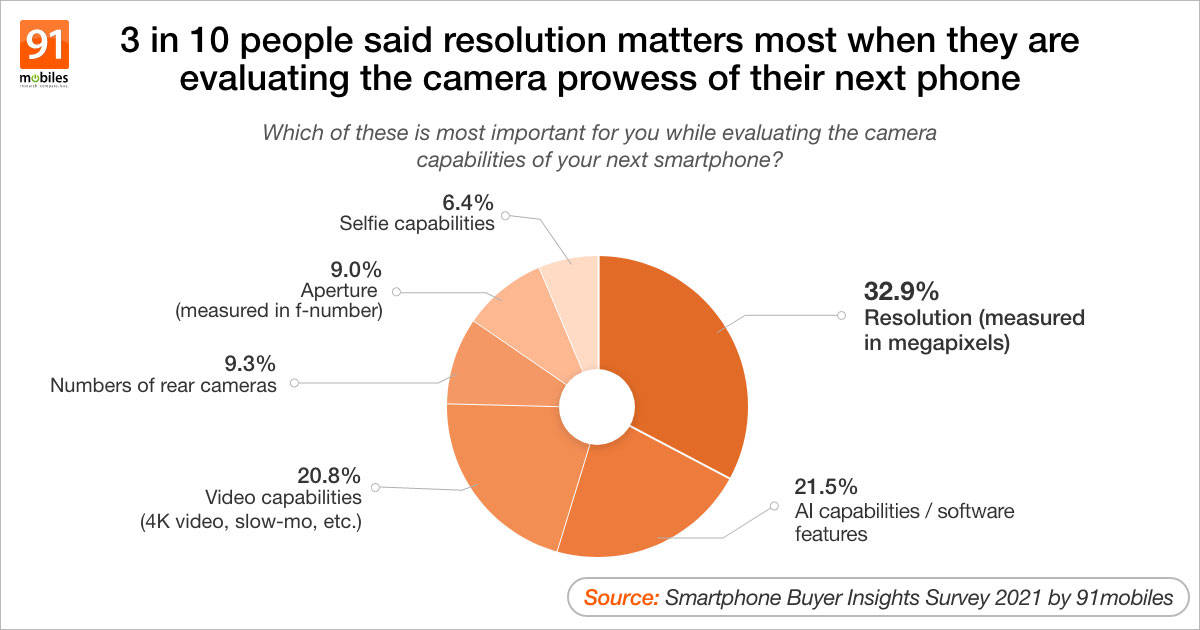91mobiles Smartphone Buyer Insights Survey 2021: a summary

The 91mobiles Smartphone Buyer Insights Survey is your window into the amazingly dynamic and highly competitive Indian smartphone industry. Over the past few weeks, we’ve been revealing insights that show how ownership patterns are currently and will be in the future, how brand loyalties are shifting, and how people decide on a new smartphone.
The full report is embedded below for reference. We also have more points pertaining to how people prefer buying phones below, but before we get into that, we’ll give you a quick recap of the insights we have revealed so far.
Ownership patterns

- In terms of current ownership share, Samsung is at the top currently with a share of 22.8 percent. The Korean brand is followed closely by Xiaomi, with a share of 21.5 percent. Next up is Realme, with a share of 10.8 percent as per survey data, followed by Vivo, OnePlus, Apple and OPPO.
- After comparing this year’s data against last year’s, it’s evident that Apple is showing a massive jump pf 140 percent, moving from an ownership share of 2.9 percent to 7 percent this year. The brand’s strong product lineup likely is a major factor for this growth.

- Samsung’s ownership share has also grown marginally, increasing to 22.8 percent from 21.3 percent last year. Samsung has traditionally been the only full-spectrum smartphone brand in India and its aggressive stance across its different lineups seems to have borne fruit. Some of the Samsung devices that stand out more than others include the likes of the Galaxy S10 Lite, Note 10 Lite, and S20 FE.
- Other brands that have shown a jump in ownership share include OPPO, OnePlus, and POCO.
- The brands that have shown a decline in ownership share as compared to last year include Motorola, ASUS and Nokia. Even Xiaomi seems to have dropped marginally, moving from 23.4 percent last year to an ownership share of 21.5 percent this year, as per the survey data.
Smartphone brands people want to buy next

- Coming to the brands people want to buy next, Samsung appears on top again, with 22.8 percent respondents saying they’d buy a Samsung phone whenever they upgrade their smartphones next. This is followed by Xiaomi (15.8 percent), OnePlus (15.4 percent), Realme (12.7 percent) and Apple (12.2 percent).
![]()
- Apple and OnePlus are seeing the biggest jump in brand preference from 2020. Almost 6 percent respondents said they want to buy Apple iPhones last year, but that number has increased to over 12 percent this year. Similarly, OnePlus is showing a jump of 3.5 percent in brand preference.
- The brands that have shown a drop in brand preference are Nokia, Samsung, and Vivo. The biggest drop here has been logged by Realme (a decline of 3.6 percent), and Xiaomi (a decline of 4.1 percent). To reiterate, these figures represent the number of people who said they want to buy smartphones fro these brands in 2020, compared to the same number this year.
Brand loyalty

- Apple tops the brand loyalty list with 75 percent of its current users saying they’d buy another iPhone whenever they upgrade next.
- Next up is OnePlus, with 67 percent users voting in its favour. That is followed by Samsung with 59 percent, Realme with 52 percent, Xiaomi with 46 percent, and POCO with 40 percent votes.
![]()
- Comparing these figures with the data from last year, it’s apparent that Apple’s brand loyalty has moved up this year by 13 percent, representing the biggest jump among all the brands. The other brands that are showing a jump in brand loyalty are Motorola and OPPO.
- On the other hand, brands that are showing a decline in brand loyalty this year as compared to 2020 are Nokia, Realme, Xiaomi and Vivo.
How people decide on a new smartphone

- As is evident from the survey figures, it seems that almost 50 percent users change their phone every 2 years. Another 27 percent do so within 1 to 2 years.
- These insights explain, to some extent, why 5G phones are becoming increasingly popular despite the non-existence of 5G networks in the country. In fact, almost 90 percent users are planning to buy 5G-capable smartphones when they update their current handsets.
- 64 percent people search on gadget websites(like 91mobiles) or YouTube while deciding upon a new smartphone model to buy. Almost 15 percent check e-commerce sites like Amazon.
- Just about 11 percent users said they visit offline stores while looking for information on a new smartphone, while another 10 percent depend upon advice from friends or family.
![]()
- Smartphone performance has emerged as the most important aspect for people while buying a new daily driver, with almost 55 percent users voting for this particular aspect. Brand name matters to 14.5 percent respondents, while the same numbers gives the most emphasis to camera capabilities.
- For evaluating the performance of a new phone before buying, almost 1 in 2 users consider processor brand (Qualcomm, MediaTek etc), as most important. 26 percent users voted in favour of RAM capacity, while 18.4 percent chose processor clock speed as the most important aspect for evaluating a phone’s performance. 8 percent respondents chose benchmark scores.
![]()
- While evaluating the camera performance of a new smartphone, almost 33 percent users chose camera resolution as the most important aspect. 21.5 percent voted for AI features and software capabilities, while almost 21 percent chose video capabilities as the most important aspect. About 9 percent voted for the number of rear cameras present on the device, while an equal number said aperture is the most important aspect. As it turned out, just 6.4 percent voted for selfie capabilities, indicating it might not be as important an aspect as it’s thought to be.
How people prefer to purchase a new smartphone
Now that we’ve summarised the insights covered previously, it’s time now to look at data based on how people prefer to purchase new smartphones.


Next, a clear trend that has been noticeable over time has also been corroborated by our recent survey, and pertains to how Indians are moving up the value chain as far as smartphones are concerned. 30 percent people currently own smartphones priced above Rs 20k, based on survey data, up from 26 percent last year. A significant chunk (almost 51 percent), use phones priced between Rs 10k and Rs 20k. In fact, almost 90 percent people are considering buying 5G-enabled smartphones when they upgrade their handsets next, which is another data point that indicates how Indians are moving up the value chain. Despite 5G phones getting increasingly more affordable, this number indicates that a larger share of people will opt for pricier devices going forward, as one would need capable, powerful devices to unlock the real potential of 5G.

We also have insights related to how people prefer to pay for their new smartphones. While a little over 57 percent would prefer to pay the full amount upfront, almost 40 percent would opt for EMIs. Out this, about 24 percent would prefer taking the EMI route through their bank or credit/debit cards, a little over 14 percent said they could use services like Bajaj Finserve or ZestMoney for the same.

In fact, our data also shows that people aged between 25 and 44 are more likely to buy a new phone using EMIs.This applies to both card-based, as well as careless EMI transactions. Given that this age group includes young executives and working folks, possibly with a higher appetite for risk… this insight doesn’t really come as a big surprise.

However, what does come across as quite interesting is the data on the number of people willing to pay extra for buying extended warranty for their handsets. As per our survey, this figure stands at almost 35 percent, which is a fair chunk. This, despite being told that extended warranty would cost roughly 5-7 percent of the phone’s price. It’s interesting because, in a way, it also shows how Indians are moving up the value chain, as not many would want to buy extended warranty for affordable devices. Demographic data around this point says that people aged below 34 years are more likely to buy extended warranty for their phones as compared to older age groups. Similarly, women are more likely to opt for this, as compared to men.

That wraps up the points from the 91mobiles Smartphone Buyer Insights Survey 2021. Keep an eye out for more such insights, coming soon.
The post 91mobiles Smartphone Buyer Insights Survey 2021: a summary first appeared on 91mobiles.com.
https://ift.tt/3tIMumj
https://ift.tt/33IpFoh







No comments